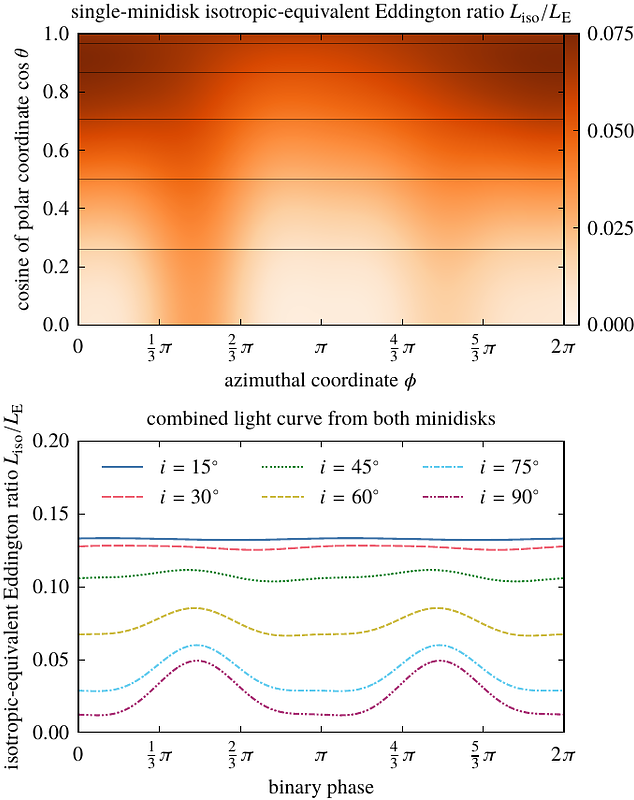Radiative magnetohydrodynamics simulation of minidisks in equal-mass massive black hole binaries

Radiative magnetohydrodynamics simulation of minidisks in equal-mass massive black hole binaries
Chi-Ho Chan, Vishal Tiwari, Tamara Bogdanović, Yan-Fei Jiang, Shane W. Davis
AbstractWe are on the cusp of detecting gravitational waves (GWs) from individual massive black hole binaries (MBHBs) with the Laser Interferometer Space Antenna and pulsar-timing arrays. These MBHBs may be surrounded by circumbinary disks and minidisks, the electromagnetic emission from which are essential for localizing the MBHBs on the sky. Here we present the first radiative magnetohydrodynamics (RMHD) minidisk simulation that directly solves the radiative transfer equation on discretized grid rays. The simulation examines one of the minidisks in an equal-mass $2\times10^7\,M_\odot$ MBHB separated by 100 gravitational radii. Minidisks simulated with and without radiative effects resemble each other qualitatively but differ in several key aspects. The RMHD minidisk is denser and geometrically thinner than the magnetohydrodynamics minidisk. Furthermore, the RMHD minidisk, with a nonaxisymmetric photosphere and temperature distribution, produces an anisotropic illumination pattern. As a result, the observed radiative flux of two RMHD minidisks orbiting each other varies at half the binary orbital period, a feature independent of relativistic boosting and lensing effects. Such periodic light curves, if identified in upcoming optical transient surveys, could reveal the existence of MBHBs on the way to merger, particularly if they are in a constant phase relation with detected GWs.